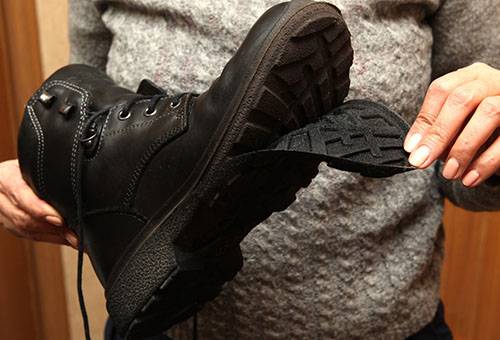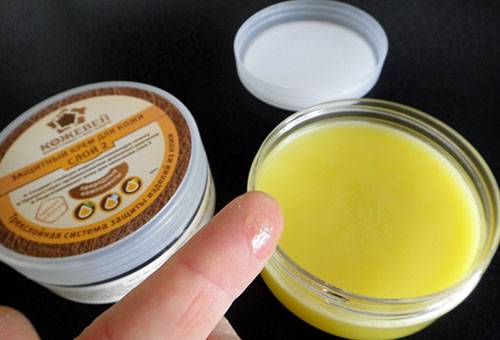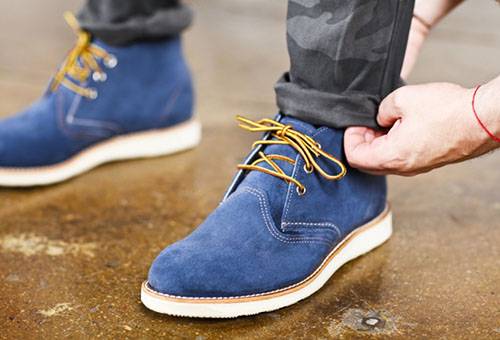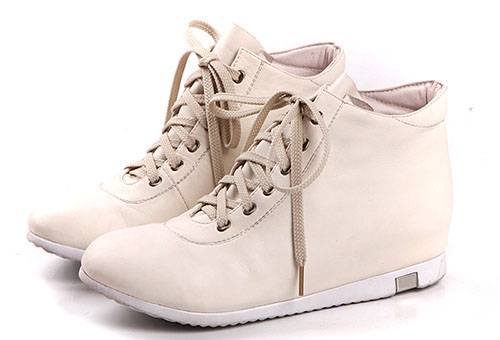What is the best way to handle shoes so that they don’t get wet?
With the onset of wet weather, it is especially important to feel comfortable in autumn shoes: a little wet, cold, and a cold will immediately make itself felt. But in the summer, sniffing in shoes is no good, because even lovers of walking barefoot in the rain are unlikely to like having wet feet on an ongoing basis. What can be done with your shoe to protect it from moisture? It all depends on the type of material and the reason for getting wet.
If it's all about the sole
In the search for moisture protection, we primarily turn our attention to skin and suede care products without saving on impregnations and wax creams. But what if the problem is not so much in the upper part of the shoes as in the sole? But it is she who is in direct contact with wet asphalt or damp ground, and it is her damage or poor quality that is the cause of your wet feet.
You must admit that you rarely step into such deep puddles that the shoe goes under the water to the very ankles, but if you still have such a sin, then it’s better to get a pair of rubber boots right now. The fact is that, stepping into a shallow puddle, you will quickly feel moisture on your feet, but neither skin nor good quality suede can skip water so quickly. Most often, moisture does not get inside through the main material, but through poor-quality seams, poorly glued soles or holes and cracks in the bottom of your shoes.
- Low-quality seams can well be greased and soaked with any water-repellent cream or spray, and animal fat, wax, paraffin or castor oil are suitable from folk remedies. True, this method will not help to get rid of the problem once and for all, and you will periodically have to update the protective layer.
- Poorly glued soles are more common on cheap leatherette shoes, but regardless of the main material, there is only one solution: peel the sole off and stick it on, and it is better to flash it again. Of course, not everyone possesses the skills of a shoemaker, and most likely you will have to bring shoes to the workshop, so think about whether this pair of shoes is worth the money and time spent on it.
- Cracks or holes in shoes can be proliferated. Although, to get ahead of the problem, it is better to do it with even new shoes. To do this, the sole needs to be slightly sanded to strengthen the adhesion of the material to the surface, apply drying oil and allow it to dry completely. A more radical way to deal with a leaking sole is to install soles on top of the sole.
Tip
Shoes of proven brands are of high quality seams and soles, which means that the risk of coming home with wet socks in such shoes will be much less. In addition, well-known brands do not save on the primary impregnation of skin or nubuck, which is also an indisputable advantage.
Skin and Suede Care
Although skincare and nubuck care with a water-repellent slope has more aesthetic weight than practical, poor quality leather can really leak moisture quite quickly, unlike dense skin made to all requirements. Yes, and it is unlikely that you want your skin or suede to absorb slush, covered with a disgusting coating of dirt, even if your legs are completely dry. We tell you what you need to do so that the shoes look chic even in the fall and do not wear out.
- Leather
The market for shoe care products is full of water-repellent compounds for any materials, so it will be the easiest to use.Impregnation in the form of a spray can be used for the skin, but special waxes and creams are a more classic option. Just keep in mind that an emulsion cream will not be able to protect against moisture: you need to choose a more expensive organic product with a high content of fat, wax and oils.
For leather, unlike suede, there are many folk remedies that can protect shoes from getting wet. The simplest is the treatment of the skin and seams with castor oil instead of cream, but you can also make mixtures: ½ tbsp. l turpentine plus 4 tsp. linseed oil and fish oil; 1 tsp paraffin or wax plus 1 tsp. linseed oil or a 1: 1 mixture of castor oil and animal fat.
Tip
In folk recipes, linseed oil can be replaced or supplemented with melted animal fat. It is believed that fat of waterfowl is best suited.
- Suede and Nubuck
Neither wax nor cream is suitable for suede, and the only way to protect it from moisture is to use special impregnation in the form of a spray, which is made on the basis of water-repellent emulsions.
Regardless of which treatment you have chosen and what material you are dealing with, impregnation can only be carried out on clean and dry shoes at least 6 hours before going outside. The procedure must be repeated regularly as necessary, as the effect of wax and sprays is not infinite.
Tip
In order to qualitatively impregnate new shoes with a protective substance, you can resort to repeated primary processing of shoes. To do this, shoes need to be lubricated or treated with a suitable tool 3 times at intervals of a day before you start wearing it. Spray the spray or apply oil or cream until the shoes no longer actively absorb them.
Shoe care made of other materials
If you are dealing with blotting non-leather shoes, then you can’t do anything with a purchase. The thing is that it is pointless to use oil or sprays on leatherette, since it does not absorb water or grease, and on fabric is simply stupid. It turns out that nothing can protect you from getting wet fabric sneakers, but boots made of leatherette can still be saved.
We mentioned that leatherette itself does not absorb moisture, which means that the problem most likely lies in poorly glued, poorly sewn or damaged soles, which brings us back to the very first point of discussion. You already know what to do: take care of the sole, and the shoes can be worn for a long time without risking getting your feet wet.
Having these simple tools and methods of caring for your shoes in the arsenal, you will no longer catch a cold due to oversight of the shoe manufacturer and bad weather.



